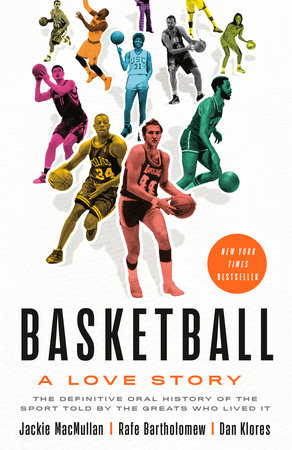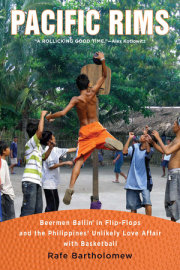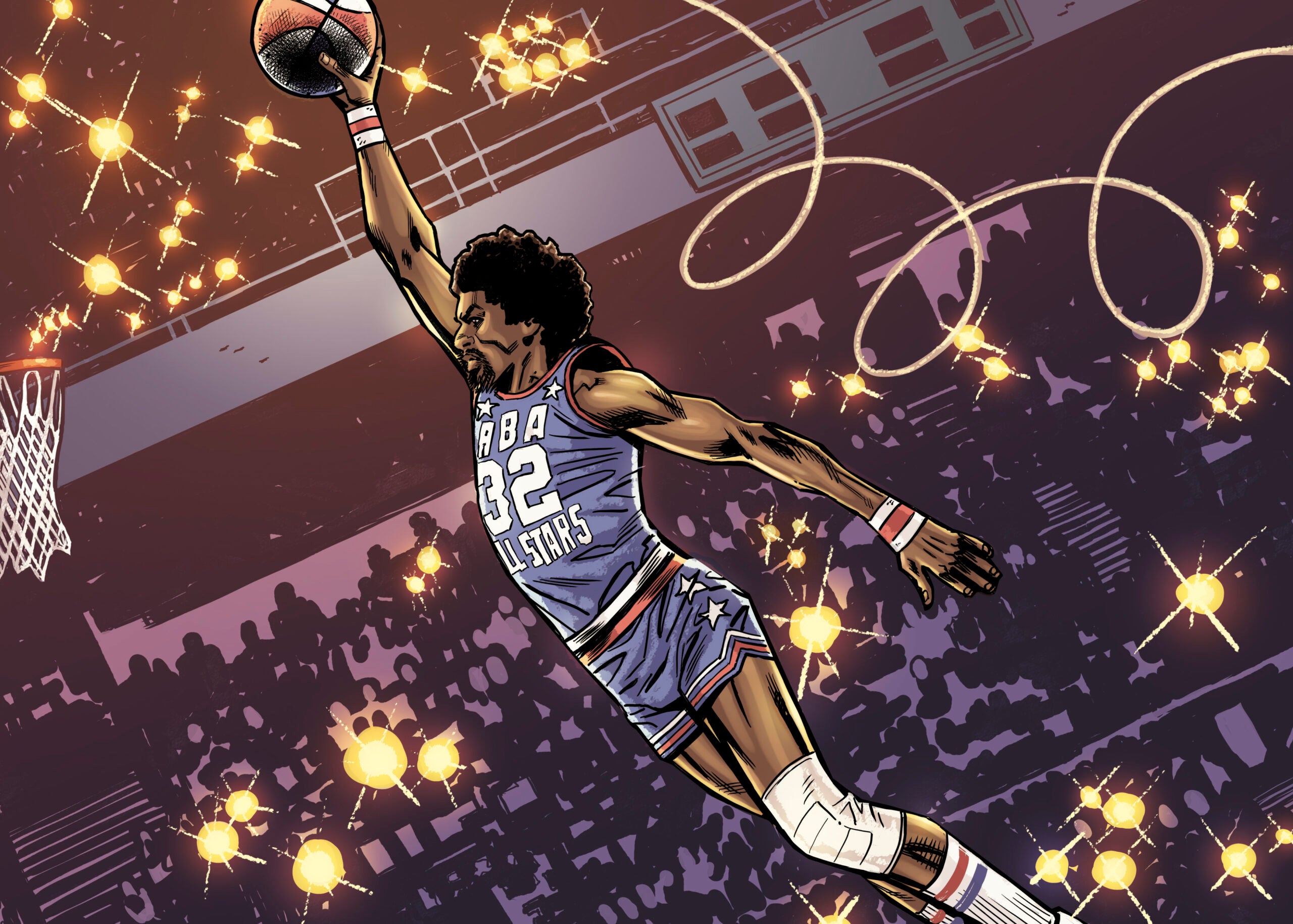Celtics vs. Lakers: Russell’s Dominance, West’s Heartbreak, and Those Balloons
The NBA may bask in an embarrassment of riches today, but the infancy of professional basketball left players so poorly compensated they required off-season jobs to pay their bills. Early NBA stars played before sparse, often raucous crowds that hurled insults--and occasionally objects--at the opponents. Travel was arduous, interest was tepid, and amenities were scarce.
The Boston Celtics played 10 forgettable seasons before their fortunes changed on April 30, 1956, the day coach Red Auerbach dealt the No. 7 pick, along with Ed Macauley and Cliff Hagan, to St. Louis for the No. 2 pick.
Auerbach fervently hoped to draft William Fenton Russell, a defensive specialist who played at the University of San Francisco, but first he had to convince the Rochester Royals, who had the No. 1 pick, not to snag Russell themselves. Celtics owner Walter Brown intervened, dialing up Royals owner Les Harrison and offering him a week of free performances by the Ice Capades (which Brown owned). Squeamish about Russell’s demands for a $25,000 signing bonus, Harrison agreed to pass on the center.
Auerbach got his man, along with territorial pick Tommy Heinsohn and second-round steal K. C. Jones. The three future Hall of Famers, along with incumbent point guard Bob Cousy, ushered in a wave of dominance that remains unmatched in professional basketball history.
BOB COUSY (Point Guard, Boston Celtics; 13‑Time All-Star; 1957 NBA MVP): The NBA was no glamour league at the start. But none of us complained. We were getting paid to play a child’s game, and that was good enough.
TOMMY HEINSOHN (Power Forward, Boston Celtics; 6‑Time NBA All-Star): If you played a game in Rochester [New York], the next night you were going to play in Fort Wayne [Indiana]. There was no direct way to get there. They would make an arrangement with one of the railroads that you took this train at 11 o’clock at night, and it would get into Indiana and it would pass through cornfields about 20 miles outside of Fort Wayne. They would stop the train, and you’d get off in the cornfield and thumb a ride from the high school kids to Fort Wayne.
COUSY: In Syracuse they’d boo you [even] if the bone was sticking out of your leg. There was no inch of sportsmanship in any way. They were hostile. Some fan got carried away, he must have had a couple of pops before the game, and this guy got onto the floor in a timeout. I took him and I shoved him in the middle of our huddle. Loscy [Jim Loscutoff] and everybody took a shot at him. They picked him back up and dumped him out, and they all ended up in court. I didn’t have to go. Heinsohn, to this day, blames me.
HEINSOHN: Carl Braun was my roommate in 1962--everyone had a roommate on the road--and we got to L.A. and there weren’t enough beds. They took some cots and moved them into this [room] and that one, and Carl Braun was left out. Here he is, a five-time All-Star, and he doesn’t have a bed to sleep in. Red starts ranting and raving, “We had reservations, blah-blah-blah,” so the manager says, “All I can think of is, I’ll put this cot in the ballroom, and the first room that becomes available tomorrow morning, he can have it.” Carl goes to the ballroom on the cot, falls asleep, and at 9 o’clock in the morning, he wakes up in the middle of a Communion breakfast.
TOM “SATCH” SANDERS (Power Forward, Boston Celtics; 8‑Time NBA Champion): One of the first things that I encountered with the Celtics, which was a mystery to me, was that half the guys smoked. I said: How could they play at the level they were playing? How could they run? How could they press? How could they do the things that they were doing and smoke cigarettes? So I started smoking. At halftime everybody would light up. The worst part, of course, was Auerbach smoking those rope cigars.
COUSY: When we played on the road, Arnold [Red Auerbach] would sit there with a cop on each side protecting him and infuriate the fans, because he wouldn’t light up his cigar until he knew we had the game won. They were already pissed off, and now Arnold’s sitting there smoking away, and the fans would throw things at us.
MARV ALBERT (NBA Broadcaster, TNT): I know guys in the NBA who really disliked Red because if you went to Boston in the springtime, the locker room, which consisted of a folding chair and a nail on the wall for each player, was sizzling hot, and if you were there in the winter, it would be below zero. There’d be no towels, no soap for the showers.
JOHN HAVLICEK (Small Forward, Boston Celtics; 13‑Time NBA All-Star): We were playing Cincinnati in the playoffs and we won a tough, close game, and as we’re leaving the floor, there’s a rowdy fan who spit on Red, so Red punched him and broke his glasses. I don’t know if he broke his nose and cracked his teeth or whatever, but the guy sued Red, and Red was going to have to go to court. I was following Red out at the time, and he said, “You saw that, didn’t you? The guy spit on me and then I defended myself.” I said, “Well, I guess.” So we went to court and Red was thinking there was going to be a big ordeal, and he ended up settling out of court by paying for the guy’s glasses and the dental work and giving him a couple Celtics key chains and beer mugs.
SANDERS: Auerbach was very pushy about winning. If we lost a couple games in a row--and that didn’t happen that often--we would have to start having a training-camp-type session, a very long practice.
ALBERT: Red was the first guy who had a scouting system. He had friends all over the country. There was someone who told him, “Hey, there’s this guy who’s pretty good playing at the University of San Francisco. His name is Bill Russell; you oughta take a look at him.”
HAVLICEK: I’ll never forget when Russell was player/coach and missed the game because of a snowstorm. Red had to come out of the stands to coach the team, and Wayne [Embry] started for Bill while we played San Francisco with Nate Thurmond. We end up beating them, and Red really reamed Russ out. He said, “How can you be the coach and not show up for the game because of a snowstorm and everyone was here?” Russ said, “Well, Red, my Lamborghini . . .” [Red] said, “Your Lamborghini? Take that Lamborghini and get yourself a jeep.”
BOB RYAN, (Columnist, Boston Globe; Retired): Red Auerbach played for Bill Reinhart at George Washington [University] and they were an up-tempo team. The NBA was still more “throw the ball in to the big guy,” but Auerbach believed firmly in trying to beat the team down the floor. Cousy was the perfect mastermind for that. One of the reasons was, Cousy didn’t hesitate to throw slingshot, sidearm 50-foot passes to advance the basketball.
HUBIE BROWN (NBA Broadcaster, ESPN; 2‑Time NBA Coach of the Year): Cousy had Houdini-type talent, and he landed with the perfect team.
RYAN: Cousy was the innovator of the behind-the-back dribble. It was nothing he had practiced--total improvisation.
BOB PETTIT (Power Forward, Milwaukee/St. Louis Hawks; 2‑Time NBA MVP): Going behind your back like that was unheard-of, and Cousy was very proficient at it. But I thought the big thing he could do was throw the ball the length of the court right on the nickel.
COUSY: I’ve never been a big self-promotion guy, but I would put my creativity, my imagination, my passing skills, with anyone who’s played the game. In 1957, I thought I was the best damn player on the planet, frankly.
HUBIE BROWN: Cousy brought fans and winning [to Boston]. But the championships came with Russell.
BILL RUSSELL (Center, Boston Celtics; 5‑Time NBA MVP): A couple weeks after I got to Boston, Cousy and I started collaborating. I was clearly at that time the best rebounder in the league, and he saw that. So he says, “When shots are taken, I’ll go to that spot over there. Look there first when you get the rebound.” Sometimes I would get a rebound and never land; just get it and redirect it. He would get the ball between the top of the foul circle and half-court on the run, so a lot of times we would have a layup within four seconds.
COUSY: The talk in Boston was, “Yeah, the Celtics are good, they’re entertaining, but in the playoffs, they die, ya know?”
HEINSOHN: We’re playing in St. Louis [in Game 3 of] the 1957 Finals, and Bill Sharman comes over to Red and says, “Red, the basket’s not 10 feet.” Bill Sharman was a very precise person, so if he said it wasn’t 10 feet, it’s not 10 feet. So Auerbach, who had coached [Hawks owner] Ben Kerner’s Tri-Cities [Blackhawks] team and had a falling-out with him, tells him about the basket. Kerner says, “You bush-league sucker,” and he goes after Red. Red winds up and pops Ben Kerner right before the game even starts. Our coach belts the owner of the St. Louis Hawks--that’s all we need. For the rest of the series, they were throwing eggs at us. I’ll never forget the sight: they hit [Auerbach] right in the forehead. It must have hurt; it was all dribbling down his face.
RYAN: The series goes seven games. Cousy actually air-balled a free throw.
HEINSOHN: Russ and I were rookies, flying high and having fun. Cousy and Sharman were so anxious they tied themselves in knots. They were something like 5 for 40 from the floor. Cous had a chance to win the game if he made two free throws.
COUSY: It was the first time I ever remember choking in basketball. We’re up 1 with 5 seconds left. I go to the line. I was a pretty good free throw shooter, 81 percent. I make the first one. Swish, we are up 2. [Player/coach Alex] Hannum--I don’t know if it was by design to freeze [me]--calls timeout. I go back to the huddle. Now, seven years we have been waiting on a championship. It’s celebration time. Hey, we got a championship! We got it, man. All you have to do is make the next free throw, because there were no three-point shots [then].
HEINSOHN: I had a little trick to get inside position on a missed free throw, where I would watch where the [shooter’s] knees would go from the corner of my eyes. I would turn my shoulder, and the guy [on the block next to me] would bump me right in front of him. As I see Cousy’s knees go up, I turn my shoulder, the guy pushes me into the middle, I look up, and there’s no ball. The ball didn’t travel halfway to the basket.
COUSY: I missed steel, OK? I missed steel! I got letters for many years after, saying, “Cous, what was Arnold’s strategy? Why did he have you miss that on purpose?”
HEINSOHN: Cous was so anxious to win this thing, after six years of trying.
CLIFF HAGAN (Forward, St. Louis Hawks; 5‑Time NBA All-Star): Alex Hannum is our player/coach, and he puts himself in the game and says, “I’m gonna throw the ball all the way down and hit the backboard, and hopefully [Bob] Pettit can tip it in.” To hit something that far away with a basketball is wild.
COUSY: We’re only up 2. For some inexplicable reason, we don’t put some monster in front of Hannum to try to impede his pass. He had to throw it 94 feet. He throws the fastball right where he aims it. [It] hits the middle of the backboard and goes to the guy he wanted it to go to--his star, Pettit--right at the free throw line. He’s gonna make the shot that he hasn’t missed before in his life.
HAGAN: Bob goes up and tips it, but he misses, and the game is over. Boston, who has never won anything, has won its first NBA championship.
COUSY: [Pettit] choked as badly as I did. He hit the damn backboard, and it almost went back to half-court.
RYAN: They don’t win without Tommy Heinsohn, who had 37 points and 21 rebounds.
HAVLICEK: They used to call Heinsohn “Tommy Gun” because he never took a shot he didn’t like. His first step offensively was as good as anybody at the time because he could get to the basket, and he had great timing for the hook shot, the drive, and he could sort of cock his head and shoot that line-drive jump shot, too. He couldn’t do more than one push‑up, but somehow he had the tenacity to be a great basketball player.
SANDERS: I had to play against Tommy every day after practice. He kept saying, “Satch, you’re supposed to be a good defensive player, so I know if I make these moves against you, it’s gonna help my game. Let’s play one-on-one.” I’d say, “Heiny, I don’t feel like playing anymore. Practice is over. Come on.” He had moves inside, moves outside, and he certainly had the aggressive nature to take the shots. But what Tommy lacked in my estimation was the kind of stamina that could give him 40 minutes a game.
HAVLICEK: Red would tell Tommy, “You got to stop smoking, because I want to use you, but you get so tired that I can’t use you.” So Tommy would stop smoking and then he would gain weight, so Red would say, “You can’t go because you’re overweight, so go back to smoking.” So he went back to smoking, and he never could get that stamina thing down.
SANDERS: Loscy, myself, Frank Ramsey, would sit beside Auerbach after a timeout any time Heinsohn was playing, because when Tommy showed signs of being tired, Red would be upset and grab the closest forward and yell, “Get Heinsohn out of there!” Whoever was sitting closest to him would get the playing time.
The Celtics won their second championship in 1959 against what was, at the time, just another opponent, the Minneapolis Lakers. Yet, in the ensuing years, the Lakers came to symbolize an annual rite of passage for Boston. From 1962 to 1969 (by then the Lakers had moved to Los Angeles), the Celtics played L.A. for the championship six times--and won all six.
Boston was making history in other ways, too. The Celtics fielded the first all-black starting five in 1964, and when they named Russell as player/coach in 1966, he became the first African American head coach in the NBA.
Copyright © 2018 by Jackie MacMullan. All rights reserved. No part of this excerpt may be reproduced or reprinted without permission in writing from the publisher.







